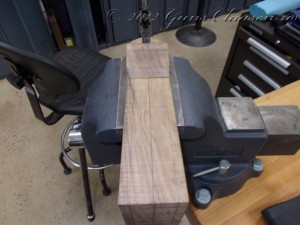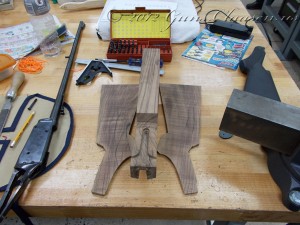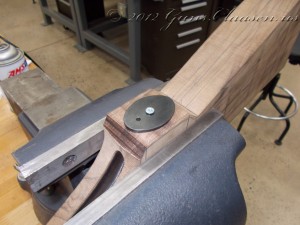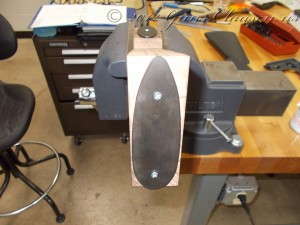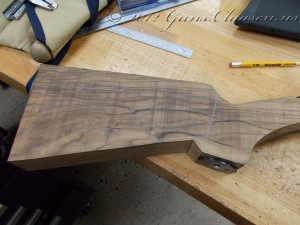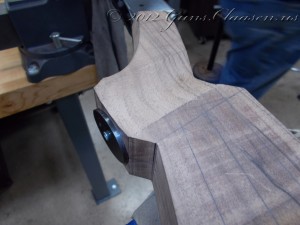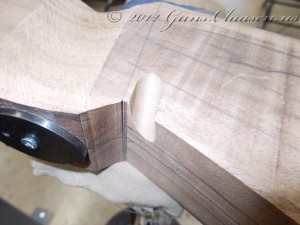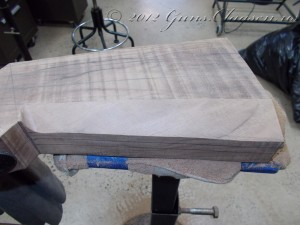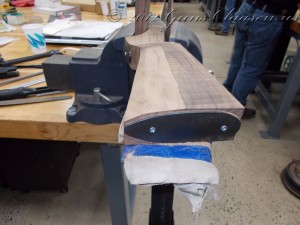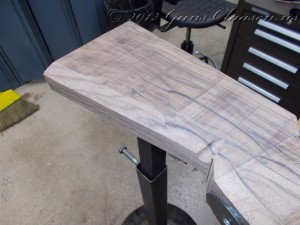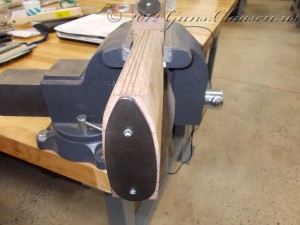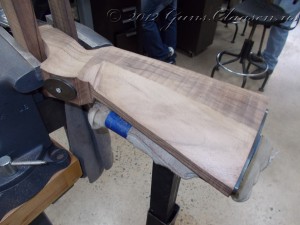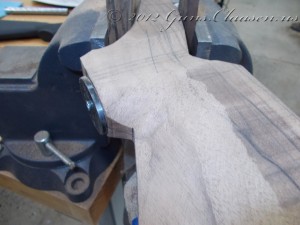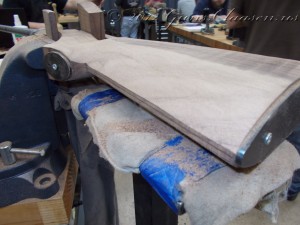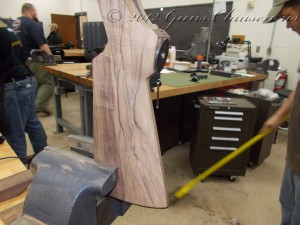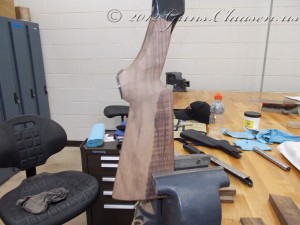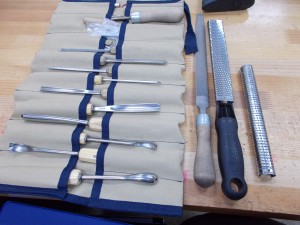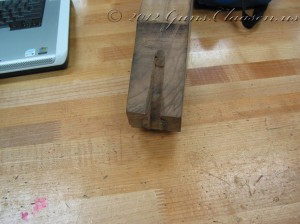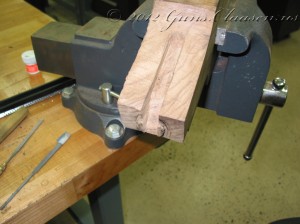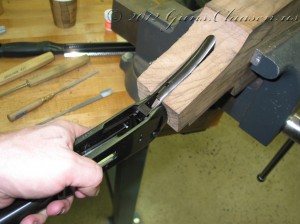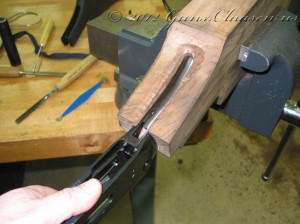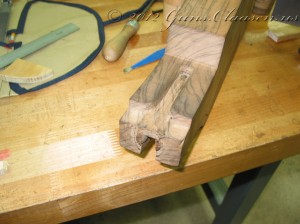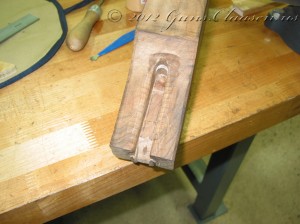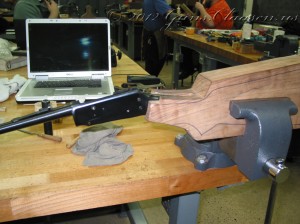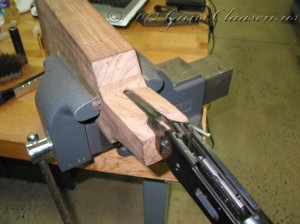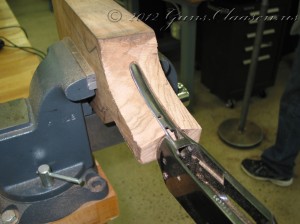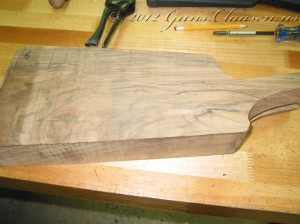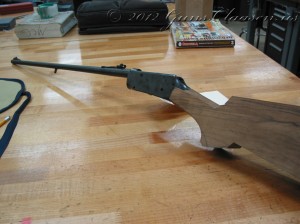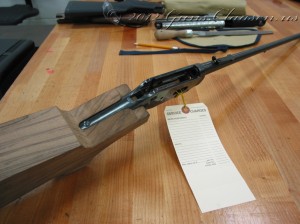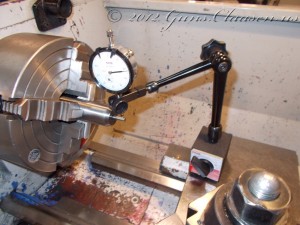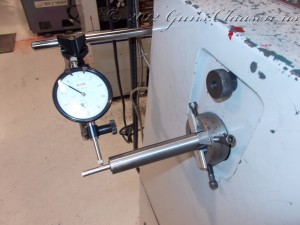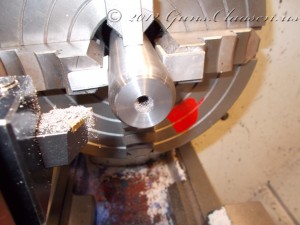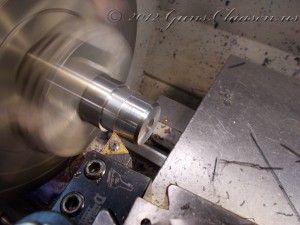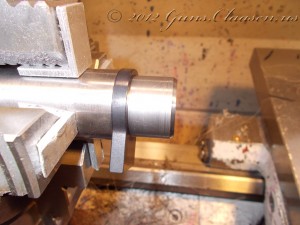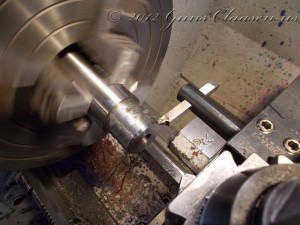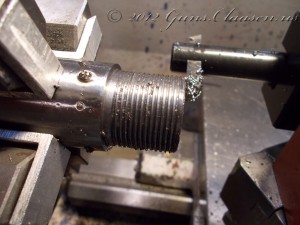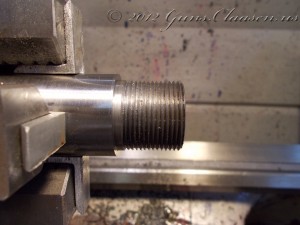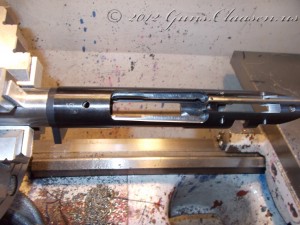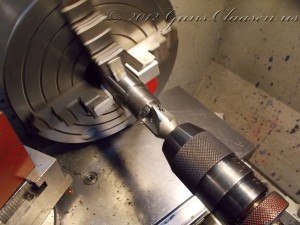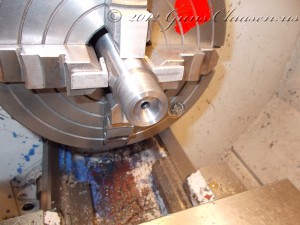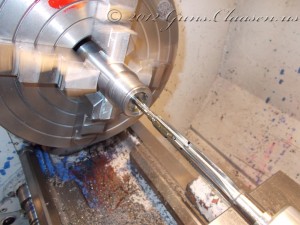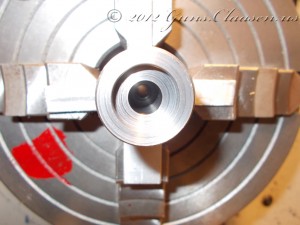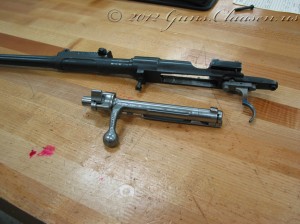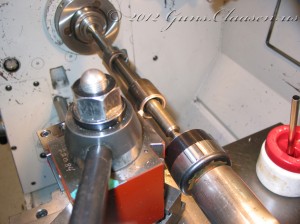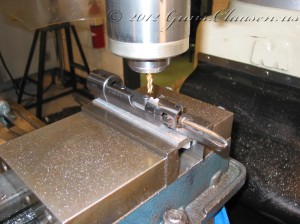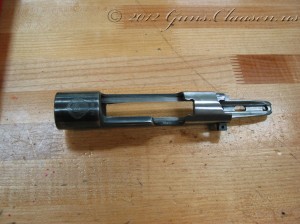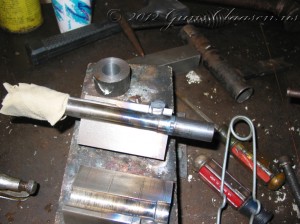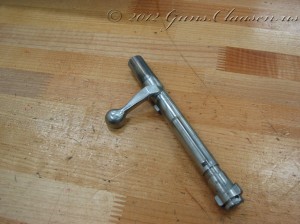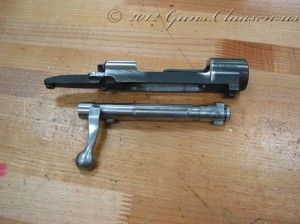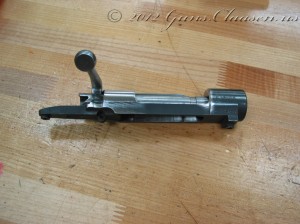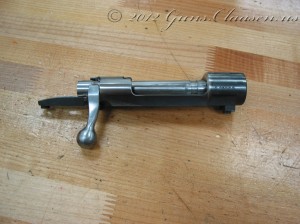 Winchester 94: Rough shaping the stock
Winchester 94: Rough shaping the stock
I am finally going to start changing this block of wood into something that somewhat resembles a stock. Since I started with a fairly thick wood blank, I decided to use the band saw to trim it down a little. After establishing a center-line for the blank in line with the rifle center-line, I marked out the width to which I wanted to cut the wood.
And we now have a thinner stock. I saved the cut-off wood for small future projects.
The next step is to mount two templates that I made in my first semester. First up is the grip cap.
And then the butt plate template.
These templates help me to shape the stock. Now it was time to do some layout work on the stock again. I divided the stock in four equal parts at the butt plate and just behind the pistol grip. I also added the following guidelines to the top and bottom of the stock: top, 0.625″ (1.58cm) just behind the pistol grip that expand to 1.25″ (3.175 cm) at the butt plate and bottom, 0.625 (1.58cm) for the length.
Now it is time for the shaping to start. The first step is to bring the pistol grip area down to roughly the thickness of the grip cap template on both sides.
Now it is time to start using the layout guide lines I grew earlier. Rough shaping the stock is done in a few steps and you work with only a small part of the stock. I started with the bottom left side of the stock. First, I filed a small guide groove behind the pistol grip.
I worked this quarter of the stock down to the first set of guide lines. I also had to make sure that the wood stays fairly flat. The tools I used to remove the wood was the flat micro plane and the #49 cabinet rasp. As both of these are fairly narrow, it is not easy to keep the wood flat. This of course applies to all the future work too and is even more crucial in the later stages of shaping the stock. A dip in the wrong place can spoil the looks of the product.
Next I worked up to the center-line of the stock.
The process then repeats on the other side. It is important also keep symmetry between the left and right side during this process. This photograph was taken during the process.
Now it is time to narrow the guide-lines at the bottom of the stock. The new guide-lines are 0.25″ (6.35cm) wide.
And the process repeats. I did make a mistake here. When you get to this point is not needed to do a front guide slot anymore. Lucky for me, it was not too deep! As the process is the same as before, I am only posting a few pictures to show the progression down to the point where the bottom part is rough shaped on both sides. You will also notice that I am slowly shaping the transition area to the pistol grip.
In the next post on this project I will show the rough shaping progress of the top part of the stock.
 Weekend “project”
Weekend “project”
I hoped to catch up with some of my backlog this weekend but it is unlikely to happen. I am a member of our Student Government Association (SGA) and I will be attending a state-wide conference with them until Sunday.
 Winchester 94: Inletting the bottom of the stock, starting to remove wood from the blank
Winchester 94: Inletting the bottom of the stock, starting to remove wood from the blank
After I completed the inletting on the top tang, I started with the lower tang. The lower tang is not fixed and that makes life a little more difficult. Furthermore, the screw that holds the receiver in the stock passes through the top tang and secures in the bottom tang in a blind hole on this model. So, not only did I have to work this down to the correct depth, I had to be really careful about how the hole will be drilled for the screw. I am showing a select few pictures of this process but it did take some time! First though, a picture of some of the tools I use. This shows the chisels, a #49 cabinet rasp and a micro plane. I some of the top bags of the tool roll is some scrapers and some needle file rasps.
On to the stock work:
And finally, after many hours of work I am done.
Next, I drilled the hole for the tang screw. No pictures of this, but I must admit that my first pilot hole was incorrect. Luckily, it was a minor mistake. Then the rifle is mounted back in the stock blank. This is the point where I start removing all the bits that do not look like a stock!
I started by removing material from the top of the tang area:
Then from the bottom tang area:
After I completed this, I removed the rifle from the stock blank again and used the original stock as a rough template. If you look carefully you can see that outline on the wood.
After I created the rough outline, I used an electric bandsaw to remove the excess wood and mounted the rifle back into the stock.
This is a good place to wrap up this post. In the next post of the series, I will do some layout work and start forming the stock.
 Mauser project: The beginning
Mauser project: The beginning
Even though the course require that I build a minimum of three rifles, an additional requirement is that one of these must use a military surplus Mauser action. There is many options available that can be used and the one I chose was M48A Mauser. These were built in Yugoslavia by Zastava and is a version of the FN designed Mauser Model 1924. Thank you to Matt for selling me the rifle for this project. I hope you like what I am doing with it. The rifle was in good condition and as I started working on it, realized that it had been refinished by an arsenal and had not seen much use since then. The only part of the old rifle that I need is the action and the bolt. I am building this rifle as a hunting rifle and when finished, will be chambered in .257 Roberts and have a one-piece wood stock made by me.
Please note that this work took place earlier this semester.
I started by disassembling the old rifle.
Then the action was mounted in a lathe and trued.
On the M48A action there is a bump on the rear of the receiver. It has a slot where cartridges on stripper clips can be inserted. However, this just does not look good. I removed the hump and smoothed the metal work.
Although the stripper clip slot can still be seen, I am leaving it as such for the time being.
My attention then turned to the bolt. I started by heating the bolt handle and forging it into a new, more graceful shape. The picture also shows two tools I made in the first semester. Screwed in the back of the bolt is a bolt mandrel which (in this case) helps to draw heat away from the bolt body. The bolt sits inside a bolt bending block.
The next picture was taken during the process. I still needed to sweep the handle backwards a little.
The next three pictures show the bolt handle after I swept the handle back, the receiver and how they fit together. I had to cut a small notch in the receiver body to allow the bolt to fully close.
So far, so good!
